 |
 |
 |
| |
HIV Awareness/Care in US Black Men May Explain Less HIV in Black Women
|
| |
| |
Conference on Retroviruses and Opportunistic Infections (CROI), February 13-16, 2017, Seattle
"percentage who reported condomlessanal sex with a man in the past 12 months (43%, 39%, and 51%; p=0.0419) increased significantly over time." ....."percent of African American MSMW who reported receiving an HIV test in the past 12 months increased significantly from 2008 to 2014 (54%, 69%,and 68%; p<.0001)"....."the percentage who reported awareness of their HIV infection (26%, 35%, and 48%; p=<0.0001),being in care within 3 months ofdiagnosis (54%, 67%, and 67%; p=0.0432), and currently being on ART (46%, 69%, and 72%, p<0.0001) increased significantly from 2008 to 2014."
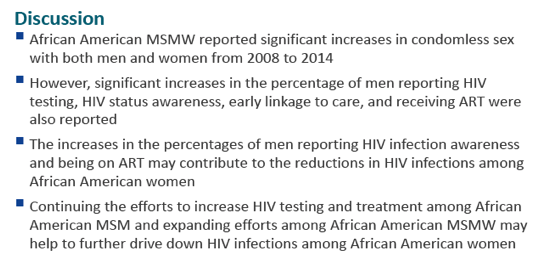
Mark Mascolini
Black men who have sex with men and women (MSMW) had more condomless sex with women from 2008 to 2014, according to an analysis in 19 US cities by the Centers for Disease Control and Infection (CDC) [1]. But these black MSMW also reported more HIV testing, HIV status awareness, early care, and antiretroviral therapy (ART) over the study years. Those factors may partly explain lower HIV incidence among black women.
The CDC reports that new HIV diagnoses in black women fell 46% from 2008 to 2014--from 56 to 30 per 100,000 women. Other research suggests that up to 40% of HIV infections in US women come from HIV-positive MSMW. The CDC conducted this study to see if changes in sex behavior or HIV awareness and care among black men may contribute to falling HIV incidence in black women.
Study data came from the CDC's National HIV Behavioral Surveillance (NHBS), which monitors HIV risk behaviors, testing, and prevalence in the United States. This analysis included MSM who entered the NHBS database in 2008, 2011, or 2014, who reported being non-Hispanic black, and who had vaginal or anal sex with at least 1 man and 1 woman in the past 12 months. The investigators aimed to determine how many men had condomless sex and whether they got tested for HIV, knew their HIV status, entered care, and started ART. Those outcomes were modeled on year of recruitment in analyses controlled for age and clustering due to venue-based recruitment of MSM.
The initial analysis involved 1173 black MSMW in 19 US cities. Proportions who had condomless vaginal sex in the past 12 months rose significantly over the 3 study years (2008, 2011, 2014) from 58% to 57% to 67% (P = 0.0225), while proportions who had condomless anal sex with a women in the past 12 months climbed from 17% to 24% to 27% (P = 0.0255). Rates of condomless anal sex with men and proportions of MSMW with 3 or more male or female partners held steady of the years.
Over the same 3 years, however, rates of HIV testing and care rose significantly in black MSMW. Specifically, the proportion of 1171 men who had an HIV test in the past 12 months jumped significantly from 54% to 69% to 68% (P < 0.0001). Among 314 HIV-infected men, the percentage who knew they had HIV rose from 26% to 35% to 48% (P < 0.0001). And among 117 HIV-positive men the proportion in care within 3 months of HIV diagnosis rose from 54% to 67% to 67% (P = 0.0432) and the proportion currently on ART climbed from 46% to 69% to 72% (P < 0.0001).
The investigators suggest that "increases in the percentage of men reporting HIV infection awareness and being on ART may contribute to the reduction in HIV infections among African-American women." They endorse continued work to increase HIV testing and treatment in black MSM in an effort "to further drive down HIV infections among African-American women."
Reference
1. Ivy W, Chapple T, Paz-Bailey G. Changes in HIV risk factors among men who have sex with men and women, 2008-2014. Conference on Retroviruses and Opportunistic Infections (CROI), February 13-16, 2017, Seattle. Abstract 852. http://www.croiconference.org/sites/default/files/posters-2017/852_Ivy.pdf
------------------------------
Changes in HIV Risk Factors among African American Men Who Have Sex with Men and Women, National HIV Behavioral Surveillance, 2008–2014
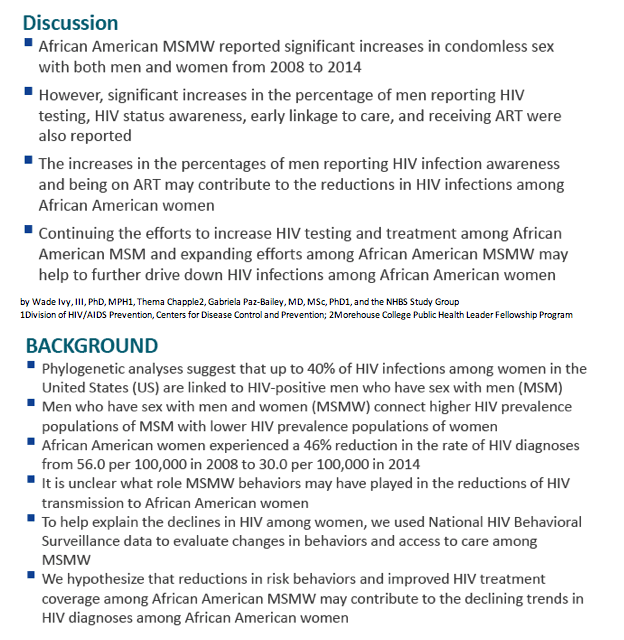
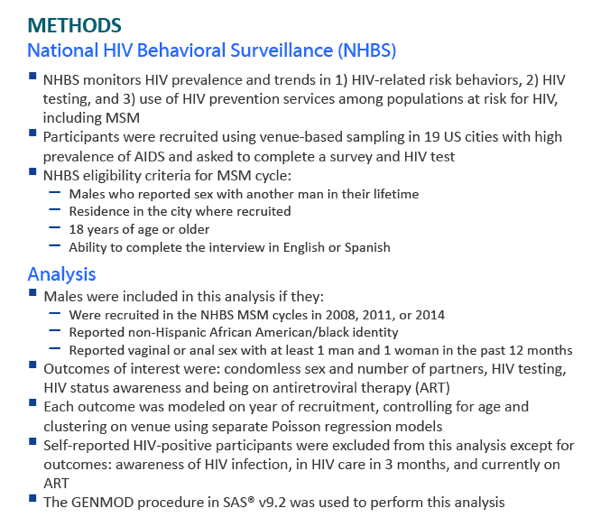
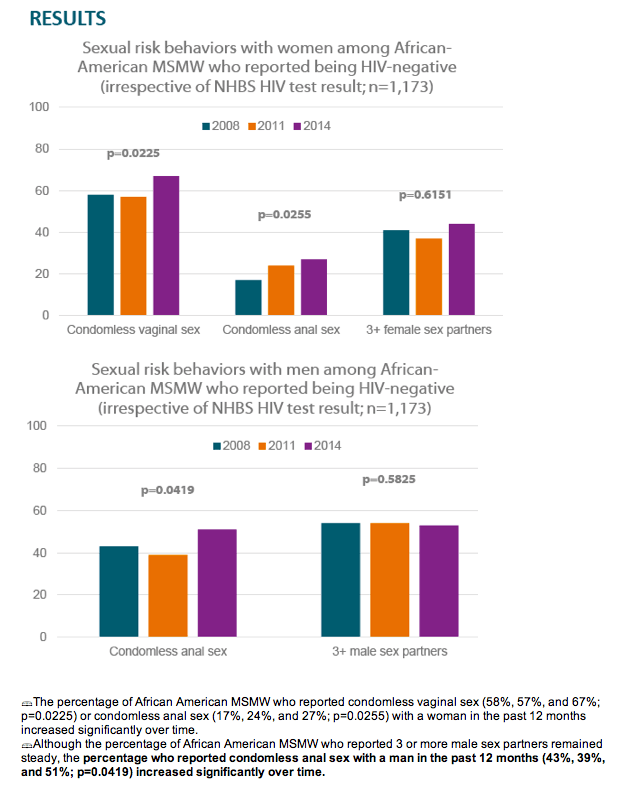
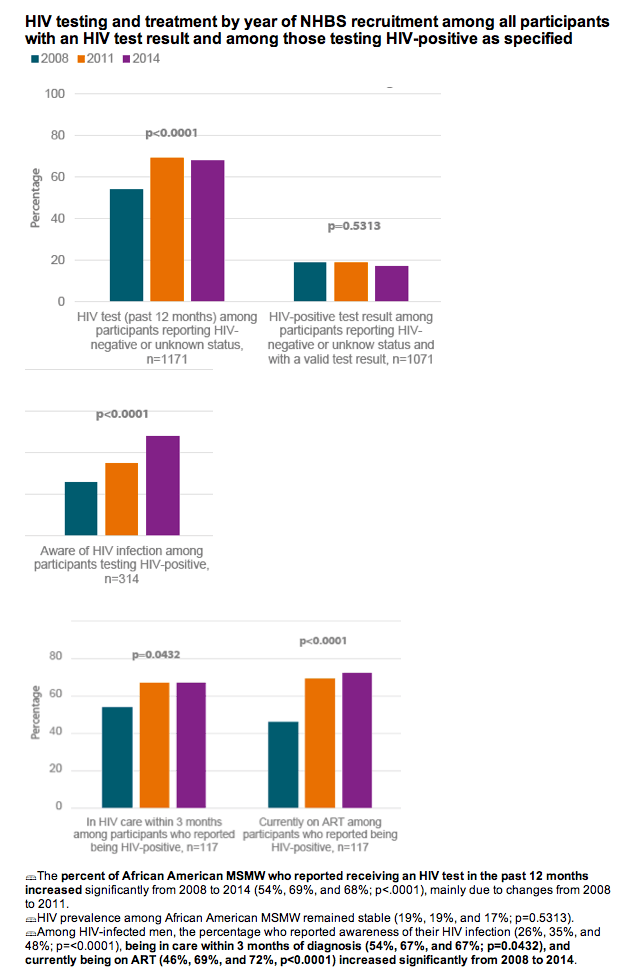
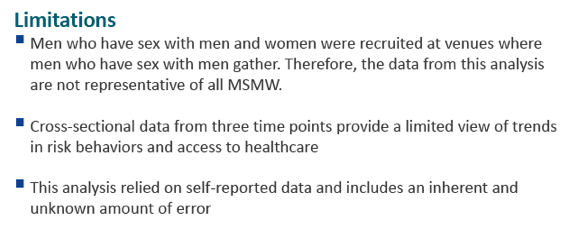
|
| |
|
 |
 |
|
|